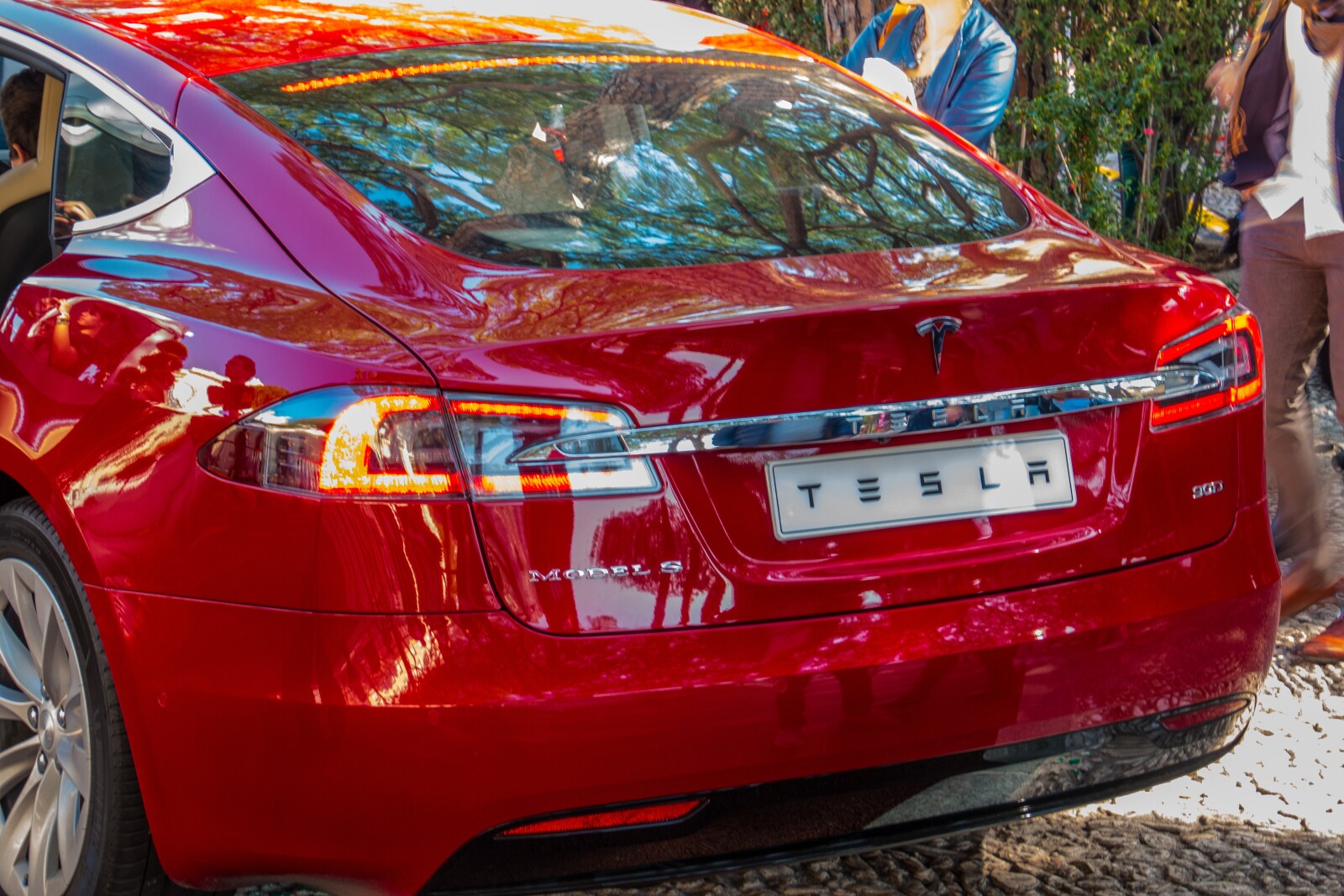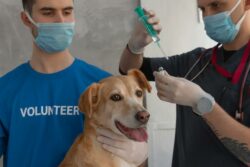Tesla Faces Class Action Lawsuit Over Deadly Suspension Defects
In a twist of modern-day David versus Goliath, Tesla, the electric vehicle giant, is in the legal spotlight. A class action lawsuit alleges the company knowingly concealed suspension defects in their Model S and Model X vehicles, produced between 2013 and 2018. This defect, compromising steering control, catapults Tesla's acclaimed innovation into a dangerous realm, potentially risking lives. This introduction delves into the lawsuit and Tesla's controversial response to the alleged defect.

Understanding the Suspension Defect
How does this alleged suspension defect manifest in the affected Tesla vehicles, and what potential risks does it pose to the safety of the operator and passengers? The issue originates from the premature loosening, wearing, and breaking of front and rear suspension control arm assembly components, which are the primary causes of suspension defects. This can result in a sudden loss of steering control, leading to a significant impact on vehicle safety. The defect can cause the wheel to fold inwards, or in severe cases, completely detach from the vehicle. Such instances compromise the safety of both the operator and passengers, posing an unreasonable risk of accidents. Understanding these defects and their potential consequences is crucial for ensuring the safety of all road users.
Vehicles Affected by the Defect
Impacted by the alleged suspension defect, Tesla Model S and Model X vehicles manufactured between September 2013 and October 2018 have been reported to experience premature loosening, wearing, and breaking of front and rear suspension control arm assembly components. This defect, posing a significant risk to consumer safety, has the potential to severely tarnish Tesla's reputation, as it raises serious consumer rights and safety concerns. The failure to address this issue proactively not only undermines the trust placed in the brand by their customers, but also their commitment to ensuring the safety of their consumers. The fact that these potential defects have been found in some of Tesla's most popular models only underscores the gravity of the situation and the potential impact on the company's standing in the market.
Risks and Dangers of the Defect
The seriousness of the suspension defect lies in its capacity to cause a sudden and unexpected loss of steering control, posing a substantial threat to the safety of Tesla drivers and passengers.
- The defect can lead to serious accidents, potentially resulting in injuries or deaths.
- This has potential legal implications for Tesla, as it may be held liable for any damages or injuries caused by the defect.
- Tesla's denial of the defect and its failure to issue a recall could impact consumer trust in the brand.
- The defect and the company's handling of it may damage Tesla's reputation, possibly affecting its market share and profitability.
- If proven in court, Tesla's alleged concealment of the defect could lead to hefty fines and sanctions.
Manifestations of the Suspension Defect
In light of the potential dangers, understanding how the suspension defect manifests in affected Tesla vehicles is of crucial importance. The defect can cause a sudden and unexpected loss of steering control, leading to a high risk of accidents. The manifestations of this defect are both alarming and perilous, putting the safety of drivers and passengers at stake.
| Defect Manifestation | Potential Dangers | Impact on Tesla's Reputation |
|---|---|---|
| Loss of steering control | Accidents, Injuries, Fatalities | Deteriorating trust, Negative publicity |
| Parts detachment | Wheel detachment, Loss of vehicle control | Increased scrutiny, Potential lawsuit outcome |
| Excessive negative camber | Irregular tire wear, Difficulty in steering | Public criticism, Declining brand image |
The lawsuit outcome could deal a significant blow to Tesla's reputation, already under scrutiny for several safety concerns. Proactive transparency and immediate corrective actions will be key in mitigating further reputational damage.
Unexpected Steering Control Loss
A critical manifestation of the alleged suspension defect in Tesla vehicles is an unexpected loss of steering control, posing a significant threat to driver safety. This has created an impactful dent in consumer trust, and potential legal consequences are looming large for the automotive giant.
- The sudden loss of steering control can lead to a dire, life-threatening situation on the road.
- This issue is reportedly prevalent in Model S and Model X vehicles manufactured between 2013 and 2018.
- The resultant negative publicity is causing a significant erosion of consumer trust in Tesla.
- The potential legal consequences for Tesla include hefty fines, forced recalls, and damage to brand reputation.
- The company's response to these allegations will be pivotal in restoring consumer trust and avoiding legal repercussions.
Severe Cases and Outcomes
Severe cases of the suspension defect in Tesla Model S and Model X vehicles have resulted in wheels completely detaching from the vehicle during operation, heightening the risk of catastrophic accidents. These incidents have significant legal implications for Tesla, both in terms of potential fines and litigation costs.
| Case Severity | Outcomes |
|---|---|
| Minor | Suspension wear and tear |
| Moderate | Loss of steering control |
| Severe | Wheel detachment |
| Catastrophic | Vehicle crashes |
| Legal | Class action lawsuit |
This situation severely undermines consumer trust in Tesla, a brand that prides itself on innovation and safety. The company's handling of the defect, particularly allegations of concealment, could have long-term impacts on its reputation and customer loyalty.
Tesla’s Recall in China
Following the discovery of the suspension defect, an estimated 40,000 Tesla Model S and Model X vehicles were recalled by the China State Administration for Market Regulation in October 2020.
The recall had a significant impact on Tesla's reputation as it raised questions over the safety of its vehicles. The potential financial implications of this recall could also be substantial, considering the costs of repair, potential compensation, and the potential loss of future sales.
- The defect prompted the recall of thousands of vehicles in China
- The suspension issue raised serious safety concerns
- Tesla's reputation was significantly affected by the recall
- The financial implications of the recall could be considerable
- The recall could impact future sales in the Chinese market
SAMR’s Findings on the Defect
While the recall severely impacted Tesla's reputation and financial standing, the China State Administration for Market Regulation's (SAMR) findings on the suspension defect further exacerbated the situation. SAMR's investigation revealed that the defect could cause the ball studs of the rear connecting rod to break, adversely impacting vehicle control.
| SAMR's Findings on Defect | Impact on Tesla's Reputation |
|---|---|
| Ball studs breakage | Severe reputational damage |
| Adversely impacts control | Questions on product safety |
| Defect in rear connecting rod | Erodes trust in brand |
| Approximately 40,000 vehicles affected | Financial blow to the company |
These findings, coupled with Tesla's initial blame on driver abuse, further tarnished the brand's image, raising questions about product safety and corporate transparency.
Tesla’s Response to the Chinese Recall
In response to the Chinese recall, Tesla controversially attributed the suspension defects to driver abuse in the Chinese market, rather than acknowledging a flaw in their vehicle design. This reaction raises questions about Tesla's accountability and has an impact on customer trust.
- Tesla's refusal to acknowledge the defect, instead blaming consumers, could be seen as an evasion of accountability.
- The lack of a recall or open acknowledgment of the issue in markets outside China further damages trust.
- Tesla's response to the recall could potentially deter future customers, impacting the brand's reputation.
- The company's approach to this issue may lead to regulatory scrutiny, affecting its operations.
- Tesla's future actions regarding the suspension defect will be crucial in rebuilding customer trust and demonstrating accountability.
Tesla’s Concealment Allegations
The controversy surrounding Tesla's handling of the suspension defect deepens further with allegations of the company actively concealing the problem. According to Tesla's concealment allegations, the company reportedly instructed service technicians to attribute snapped suspension arms to driver abuse rather than a defect. This not only downplays the severity of the issue but also shifts the blame unfairly onto customers. Furthermore, the company is said to have silently redesigned the suspension components without informing its customers, a move that further erodes trust. The cumulative impact on customer trust is significant, undermining confidence in Tesla's commitment to transparency and safety. Ultimately, this could result in long-term reputational damage, affecting the company's market position and customer loyalty.
Tesla’s Non-Disclosure Agreements
Tesla's alleged concealment of the suspension defect also extends to the company's controversial use of non-disclosure agreements. These agreements reportedly required customers to remain silent about their experiences with the defect, thereby suppressing its widespread knowledge.
- Tesla's non-disclosure agreements are claimed to have been used to prevent customers from publicly discussing the suspension defect.
- The agreements allegedly required customers to accept goodwill repairs without further publicizing their experiences.
- These agreements have raised concerns about the transparency of Tesla's business practices.
- The impact of the defect on vehicle control was potentially downplayed due to these agreements.
- These non-disclosure agreements are now under scrutiny as part of the class action lawsuit, which seeks to hold Tesla accountable for its alleged concealment of the dangerous defect.
Tesla’s Technical Service Bulletins
Addressing the suspension defect, Tesla's approach involved issuing technical service bulletins instead of conducting a full-scale vehicle recall. This move, an integral part of Tesla's response to customer complaints, was seen as a strategic attempt to minimize the impact on Tesla's reputation.
| Year | Bulletin Type | Impact |
|---|---|---|
| 2017 | Suspension | Minimizing recall scope |
| 2018 | Steering | Damage control |
| 2020 | Battery | Reputation management |
Despite this, the decision sparked controversy, with critics arguing that the bulletins downplayed the severity of the defect. This, coupled with allegations of Tesla's active concealment of the issue, raised questions about the company's commitment to customer safety. The consequences of these actions, both legal and reputational, continue to unfold.
Silent Redesign of Suspension Components
In an undisclosed move, Tesla silently redesigned and reinforced the suspension components of their Model S and Model X vehicles, offering a potential solution to the latent suspension defect without informing customers or issuing a recall. The impact of the silent redesign has been significant, with ongoing customer complaints and feedback on the defect.
- The redesign has potentially reduced the risk of suspension failure, improving safety.
- Many customers, unaware of the redesign, continue to experience the defect.
- Tesla has not publicly acknowledged the redesign, leading to mistrust.
- The silent redesign has not reduced the number of lawsuits filed against Tesla.
- Despite the redesign, Tesla has not issued a recall, leaving many vehicles potentially at risk.
Tesla’s Responsibilities and Duties
Having a duty to protect consumers and maintain public trust, Tesla is expected to promptly disclose any safety defects in its vehicles, a responsibility that has been called into question due to the alleged concealment of the suspension defect. This forms the crux of Tesla's legal obligations, which also include compliance with safety standards and regulations.
The table below encapsulates the potential impacts of this issue:
| Potential Impact | Short-term Effect | Long-term Effect |
|---|---|---|
| Consumer Trust | Decrease in confidence | Erosion of brand loyalty |
| Corporate Reputation | Temporary damage | Long-term brand damage |
| Legal Consequences | Immediate lawsuits | Ongoing legal battles |
The impact on consumer trust and the potential legal implications underline the gravity of Tesla's alleged actions, emphasizing the importance of its responsibilities.
Aim of the Class Action Lawsuit
While Tesla's alleged negligence has resulted in significant backlash and potential damage to its reputation, the class action lawsuit's primary objective is to hold the company accountable for its actions, ensuring the safety of its customers and compelling it to address the suspension defect issue transparently.
The lawsuit aims to:
- Draw attention to the dangerous suspension defect, underlining the potential impact of the lawsuit on Tesla's operations and customer trust.
- Secure potential compensation for affected owners to cover repair costs, decrease in vehicle value, and other related damages.
- Compel Tesla to acknowledge the issue publicly and launch a recall for the affected vehicles.
- Ensure that such negligence does not recur, thereby protecting future Tesla customers.
- Reinforce the importance of corporate transparency and responsibility in the automobile industry.
Frequently Asked Questions
How Have Tesla’s Stock Prices Been Affected by the Allegations of the Suspension Defect?
Investor reactions to allegations of a suspension defect in Tesla vehicles have led to stock volatility. While Tesla's innovative approach and growth potential often bolster its stock prices, negative reports can cause fluctuations. However, it's crucial to analyze a broader range of factors, including overall market trends, to assess the direct impact of these allegations on Tesla's stock prices. Detailed financial analysis would provide a more accurate picture of the situation.
Has Tesla Faced Any Legal Penalties or Fines Due to the Alleged Suspension Defect?
While concrete information on legal penalties or fines related to the alleged suspension defect remains undisclosed, Tesla has certainly faced legal implications. The Defect Implications encompass a potential compromise of vehicle safety, leading to consumer discontent and lawsuits. Legal Outcomes could include considerable financial penalties, mandated recalls, and reputational damage. These outcomes depend on the investigation's results by regulatory bodies and the progress of ongoing class-action lawsuits.
What Steps Can Owners or Lessees of the Affected Tesla Models Take if They Have Experienced the Suspension Defect?
Owners or lessees of affected Tesla models can report the suspension defect to Tesla's customer service or the National Highway Traffic Safety Administration. They may also consult a mechanic for suspension maintenance tips. If necessary, legal counsel can be sought. It's vital to document all related incidents and repairs. Joining the ongoing class action lawsuit is another option if they've experienced loss due to the defect.
Is There Any Data on the Number of Accidents or Fatalities That Have Occurred Due to the Alleged Suspension Defect?
Data on accidents or fatalities caused by the alleged suspension defect is not readily available. However, the impact of this defect on Tesla's quality control is significant, putting the safety of Tesla drivers and passengers at risk. A precise quantification of this impact requires comprehensive data collection and analysis, which is a complex process considering the global distribution of Tesla's customer base. The need for transparency and accountability in this matter is paramount.
Has the National Highway Traffic Safety Administration (Nhtsa) in the U.S. Taken Any Action Against Tesla Regarding the Suspension Defect Allegations?
The National Highway Traffic Safety Administration (NHTSA) has been actively monitoring the alleged suspension defects in Tesla's vehicles. Although NHTSA has not yet taken formal action, it has been gathering data and considering whether to open a formal investigation. In response, Tesla has maintained that the issues are not due to a manufacturing defect, but rather driver abuse. The company has yet to issue a recall for the affected models in the U.S. market.

This post has been generated by AI and was not reviewed by editors. This is Not legal advice. Please consult with an attorney.




